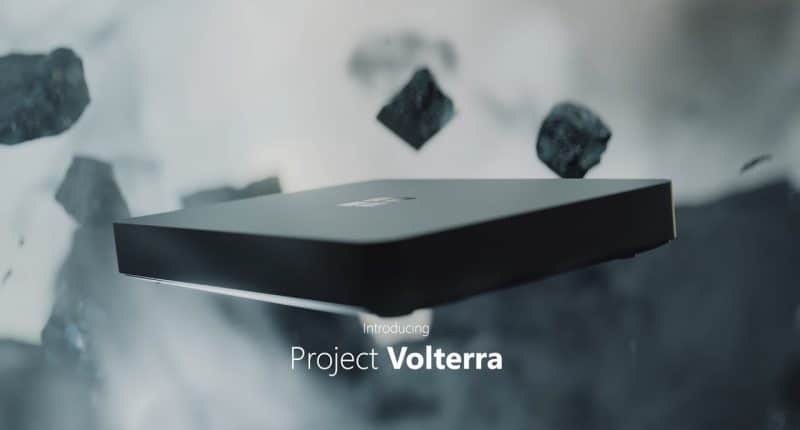At its Build 2022 annual developer conference, Microsoft has unveiled ‘Project Volterra’, a new device powered by Snapdragon, with support for ARM based AI chips.
“We are always evolving the platform to support new and emerging hardware platforms and technologies, such as GPUs that render an app’s user experiences, Wi-Fi and cellular chipsets that ensure devices are always connected, and CPUs including MIPS, x86, Alpha, Itanium, and x64,” the company said in a blog post.
Panos Panay, the chief product officer of Windows and Devices at Microsoft, added that they were “always evolving the platform to support new and emerging hardware platforms and technologies.”
While Windows on ARM has been successful, the number of native ARM apps on Windows is still low. But this might change with Project Volterra.
The device will roll out at an undisclosed price later this year. It will be accompanied by what the company calls a “comprehensive end-to-end Arm-native toolchain for Arm native apps” so that developers can build and test Arm-native apps.
The toolchain includes the Full Visual Studio 2022, VSCode, Visual C++, NET 6, Windows Terminal, Java, Windows Subsystem for Linux, and Windows Subsystem for Android. We will get the previews for each component in the next few weeks, and Microsoft has even more additional open-source projects that natively target Arm (such as Python, Node, git, LLVM, and others) to come.
Volterra will also come with Qualcomm’s latest Neural Processing SDK for Windows toolkit, along with support in Windows for Neural Processing Units (NPUs, which are more common on smartphones). Microsoft says that the toolkit will enable developers to explore many AI scenarios.
The Neural Processing SDK toolkit for Windows, according to Panay, will allow developers to execute, debug and analyze the performance of deep neural networks on Windows devices with Snapdragon hardware, as well as integrate the networks into apps and other code.
This is the latest instance of Microsoft and Qualcomm teaming up to launch AI developer hardware. You may remember the Vision Intelligence Platform which they had jointly announced four years ago – it featured “fully integrated” support for computer vision algorithms running via Microsoft’s Azure ML and Azure IoT Edge services.
More details about Project Volterra are yet to be revealed, but we know that the neural processor is said to have the “best-in-class” AI-computing efficiency and capacity. The company expects that most (if not all) future computing devices will come with in-built NPUs, and thus, it is making it easier for developers to leverage these new capabilities by bringing support for NPUs into the end-to-end Windows platform.
